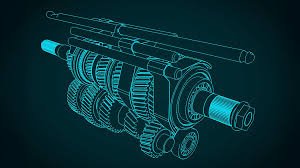In today’s rapidly evolving technology landscape, precise motion tracking and orientation awareness have become essential across industries—from robotics and autonomous vehicles to smartphones, drones, and wearable devices. At the heart of this capability lies the IMU sensor, short for Inertial Measurement Unit. However, the true magic happens not only within the sensor itself but also in the sophisticated technique that processes its data: IMU sensor fusion.
With increasing reliance on automation and intelligent systems, understanding how IMU sensor fusion works—and how it integrates with advanced techniques
What Is an IMU and Why Is Sensor Fusion Necessary?
An IMU typically combines three types of sensors:
-
Accelerometer – Measures linear acceleration.
-
Gyroscope – Measures angular velocity.
-
Magnetometer (optional) – Measures direction relative to Earth’s magnetic field.
These sensors generate raw data about motion and orientation. This data, however, often contains noise, drift, or inconsistencies when read separately. For example, gyroscopes drift over time, accelerometers register gravity as acceleration, and magnetometers can be affected by metal interference.
This is where IMU sensor fusion comes into play.
Sensor fusion algorithms combine data from multiple sensors to deliver accurate, stable, and real-time estimates of orientation, velocity, and position. Instead of relying on one imperfect sensor, fusion creates a unified, reliable output using mathematical modeling, filtering, and dynamic estimation.
How IMU Sensor Fusion Works
IMU sensor fusion works by merging multiple data streams using algorithms such as:
1. Kalman Filter
A widely used algorithm that predicts and corrects sensor measurements in real time. It smooths noisy data, reduces errors, and estimates motion states with impressive precision.
2. Complementary Filter
A simpler alternative that blends fast-changing gyroscope data with slower but stable accelerometer data. It’s lightweight and works well for embedded systems with limited computing power.
3. Extended and Unscented Kalman Filters
Advanced versions used in robotics, drones, and autonomous navigation where nonlinear movement and high-dynamics environments demand greater accuracy.
4. AI Sensor Fusion
A modern approach using machine learning models to process sensor signals. AI sensor fusion is becoming popular because it can learn complex patterns and adapt to varying environmental conditions better than classical algorithms.
By merging these sensor streams, an IMU system can provide high-quality orientation data—even in challenging real-world environments.
Why IMU Sensor Fusion Matters Across Industries
1. Robotics
Robots require stable orientation and motion sensing to execute precise movements. Sensor fusion enables:
-
Smooth navigation
-
Accurate arm articulation
-
Real-time obstacle detection
Pairing IMU data with AI sensor fusion allows robots to adapt better to environmental changes and noise.
2. Autonomous Vehicles
Self-driving cars rely on multiple sensors—IMUs, GPS, lidar, radar, and cameras. IMU sensor fusion bridges gaps when signals are lost or distorted, such as driving through tunnels or urban canyons.
3. Drones and UAVs
For drones, IMU sensor fusion ensures:
-
Stable flight
-
Quick orientation corrections
-
Smooth hovering even in windy conditions
A drone relying solely on accelerometers and gyroscopes would drift drastically without fusion algorithms.
4. Smartphones and Wearables
Applications include:
-
Screen rotation
-
Step tracking
-
Fitness monitoring
-
AR/VR immersion
With AI sensor fusion, newer devices achieve far more accurate tracking and context awareness.
5. Industrial Automation
Manufacturing robots and automated logistics systems depend heavily on IMU-enhanced tracking for:
-
Conveyor alignment
-
Robotic precision
-
Predictive maintenance
Choosing the Best IMU for Your Project
Choosing the Best IMU depends on your application’s accuracy requirements, environmental conditions, and budget. Here are the key factors to consider:
1. Degrees of Freedom (DoF)
IMUs are commonly available as:
-
6-DoF (accelerometer + gyroscope)
-
9-DoF (adds magnetometer)
For advanced robotics or drone applications, a 9-DoF IMU is typically the Best IMU option.
2. Sensor Precision and Drift
High-quality gyroscopes with low drift ensure consistent long-term accuracy. Industrial-grade IMUs often feature temperature-compensated sensors that remain stable in extreme environments.
3. Sampling Rate
The higher the sampling rate, the smoother and more responsive the motion tracking. High-performance applications (VR, robotics, UAVs) require higher rates.
4. Built-in Sensor Fusion
Some IMUs come with onboard fusion algorithms, reducing processing load on the microcontroller. Others rely on external processors or custom software, offering more flexibility.
5. AI Compatibility
The Best IMU for AI-driven systems should support high-resolution, low-noise data suitable for machine learning models.
If your project integrates AI sensor fusion, an IMU with fast data throughput and stable calibration will deliver better model accuracy.
The Growing Role of AI Sensor Fusion
Traditional algorithms like Kalman filtering are reliable and mathematically sound, but they have limitations when dealing with nonlinear, unpredictable environments.
This is why AI sensor fusion is rapidly gaining traction.
Machine learning models—especially deep learning—can:
-
Detect patterns in complex motion data
-
Automatically adapt to sensor drift
-
Improve tracking accuracy over time
-
Reduce the need for manual calibration
For example, AI models can recognize when a magnetometer is being disrupted and adjust trust levels accordingly. In wearables, AI can distinguish between different motion types, improving the precision of fitness tracking, gait analysis, and fall detection.
Future Trends in IMU Sensor Fusion
With advancements in AI, hardware miniaturization, and real-time processing, IMU sensor fusion will play an even larger role in shaping future technologies.
Upcoming trends include:
-
Fusion of IMUs with vision sensors for enhanced robotics navigation
-
AI-adaptive IMUs that learn user behavior patterns
-
Ultra-low-power IMUs for IoT and smart home devices
-
Fusion-optimized processors that embed neural networks directly on the chip
The combination of powerful IMUs and intelligent fusion algorithms is paving the way for smarter, safer, and more efficient systems.
Final Thoughts
IMU sensor fusion has become a foundational technology across robotics, vehicles, wearables, consumer electronics, and automation. As the demand for precise motion tracking grows, businesses and developers must choose the Best IMU and the right fusion approach—whether classical algorithms or cutting-edge AI sensor fusion.
By understanding how IMU sensor fusion works and how to leverage it effectively, innovators can build more responsive, accurate, and intelligent systems ready for the future.






